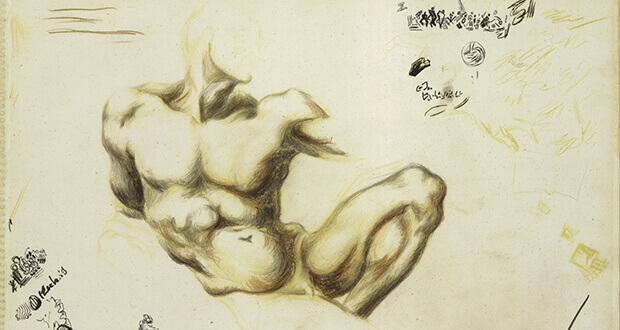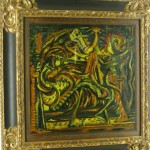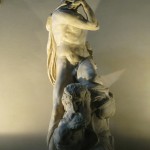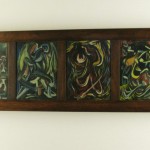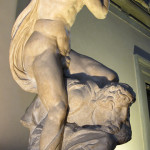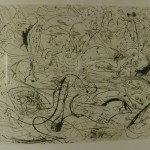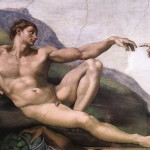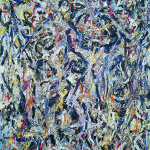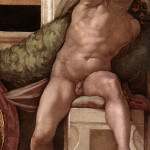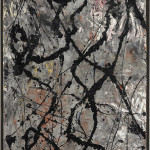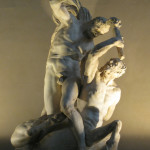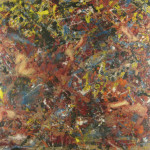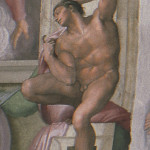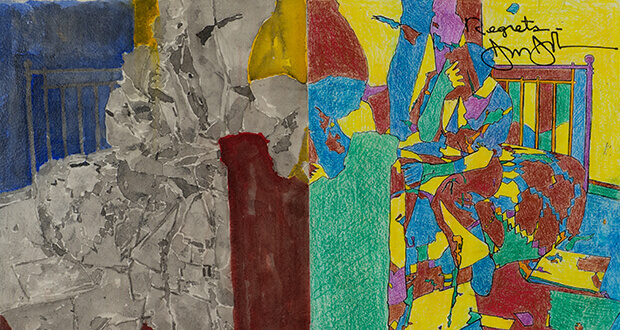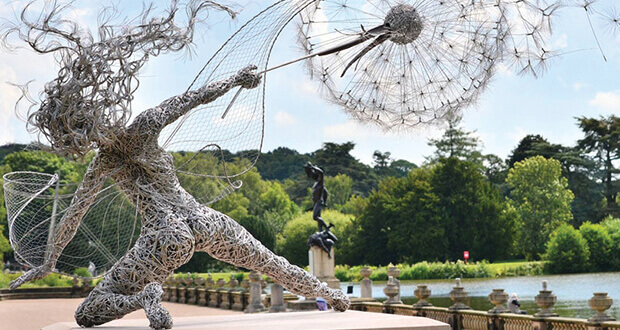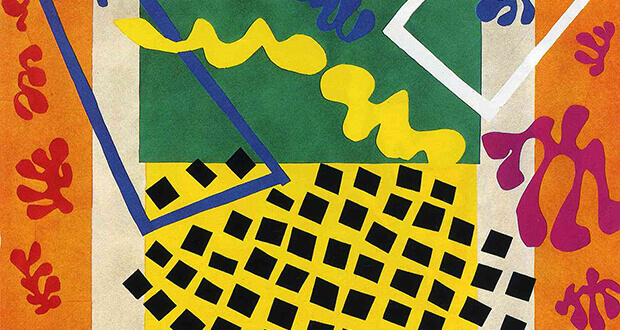Palazzo Vecchio, Florence
16th April – 27th July 2014
To the question “Which is the meaning of Modern Art?” Jackson Pollock answered: “The Modern Art is nothing more than the expression of contemporary tensions of the age we are living in. A painter should not seek the object in the outside world but get inspired by an inner world. As soon as you give it a shape, the shape just vanishes”.
Comparing the American artist to the legendary Michelangelo Buonarroti (1475-1564), for the first time, the city of Florence wants to pay tribute to Jackson Pollock (1912 -1956), one of the main artist of the XX century art, the one that broke the rules of the western figurative arts, leaving behind the perspectives of the Renaissance.
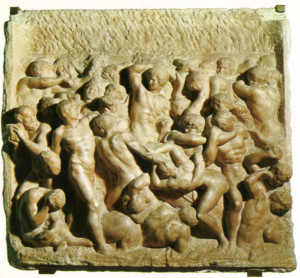
The idea of the exhibition started by studying some drawings of Pollock in the Metropolitan Museum of Art of New York, published in 1997 by Katharine Baetjer for the temporary exhibition of Pollock works on his notebooks and his relation with the “ancient Maestri”. We can see, through these precious scratch pads – Sketchbooks I, II – how Pollock appreciated the Giudizio Universale of Sistine Chapel’s vault. We can recognize through his nude paintings like Giona Prophet or The Creation of Adam, the indisputable Pollock’s interest in the energy and grace incarnated in the nude bodies of the Sistine Chapel.
During his training period by Thomas Hart Benton, a very popular American painter of the second half of the ‘900s, Pollock went across many Italian masterpieces of the Renaissance. Benton was really found of Michelangelo, Tintoretto, El Greco and Rubens; he wanted his pupils to study these artists and their way to express and draw human body, paying attention to the volumes, full and empty, the antithesis of intimate motions versus the structure of human body.
“Here we can find the basis of the abstracts compositions of Pollock, – said the exhibition curators – the artist searching for his own language that will led him to surpass the European figurative art tradition”.

A tradition that is still visible in his works even in his untraditional paintings, like Lee Krasner, artist and Pollock lover, explains: : “ Many paintings, also the most abstract ones, started with a recognizable iconography – heads, bodies, fantastic creatures. One I asked Jackson the reason why he continues to draw even after a certain image has taken life. He answered me: I want to clothe the figure”.
Pollock overtakes the pure academic copy of Michelangelo’s works. The displayed drawings show Pollock’s involvement in the study of anatomy and muscles, for an expression of feelings of sweetness and grace, but also tension and power.
Four hundred years after, with an explosive gesture and a creative input, here it is the parallelism about the two great artists: the vital breath of creation, the unstoppable instinct of creativity, with the mutual seeking of the universal beauty and infinity as a leading guide for making art. As God was for Michelangelo his revelation, considered an unreachable target, at contrary, Pollock tried to achieve his maximum, his ideal and global harmony. Pollock starts from the perception of an image and then arrive to decompose it in his unconscious system; he reverse the image to regenerate it in infinite changes and ways of decoding.

Starting from the intense lesson of Michelangelo’s geniality, Pollock creates a new way of painting, surpassing the classic canvas on an easel: he laid the canvas on the floor to paint from all the directions, going around, led only by his passion and dynamism. He creates the technique of dripping, that consists in dripping or pouring the
paint directly onto canvas, without the use of the brushes. In 1952 Harold Rosemberg defined the technique “action painting”, describing the artist input of creating the work led by his physical and spiritual involvement, sometimes impetuously, totally in contrast with the canvas.
” I don’t use the easel to paint. I prefer to put canvas on the wall or on the floor. I need and use the contrast with a solid surface. I feel comfortable on the floor. In this way, I feel myself much closer to the painting, feel myself like a part of it, I can walk around it, work from the four angles, feeling like I’m “into” the canvas. This technique is inspired by the “Sand painters”, west Indian artists. “. (Jackson Pollock)
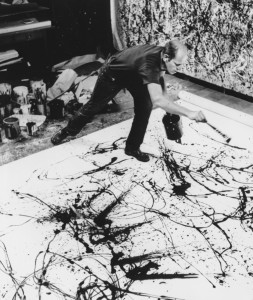
Some eminent graphic works are displayed in the exhibition (Pollock Krasner Foundation): two from the late forties, where the Pollock’s style started to define itself in a more mature way, mixing figures and signs to create a peculiar textures – here there are a lot of connections with the Michelangelo’s art, some of them recalling the Fight between Titans; equally important are the other two graphic works of the fifties, in which returned the expression power and the figurative communication of faces and human bodies.
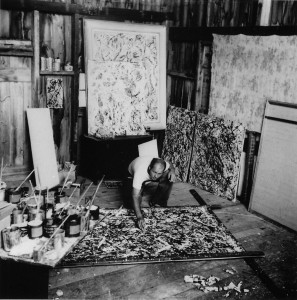
The exhibition shows, for the first time in Italy, six drawings -on loan by Metropolitan Museum of New York– and many others, along with etchings, from different public and private collections: works of a young Pollock, created in the thirties, like Panel with Four designs, The Pollock Krasner Foundation, New York – from Washburn Gallery of New York and Square composition with horse (National Gallery of Modern Arts, Rome); paintings from forties like The water Bull (Stedelijk Museum, Amsterdam) and Earth Worms (Museum of Art in Tel Aviv) in which is clear his peculiar and popular style, in the field of abstract expressionism.
The second section, hosted in the complex of San Firenze, in the Music Room, is characterized by an interactive and multimedia area
that guides the visitors to a new way to experience art and comprehends the work of great artists like Pollock, proponing creative sections, videos about the artist’s life, re-creating the studio in which Pollock painted his works. His works contain a creative energy capable of kidnapping and involving the observers: the Pollock’s universe is penetrating, it’s an experience that leads the observers to identify themselves with the canvas.
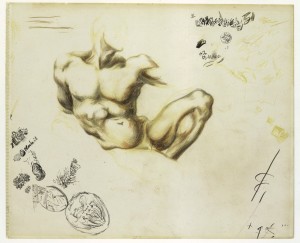
Particularly stunning is the painting Composition with Black Pouring from Olnick-Spanu collection that was hold at Jackson Pollock studio. The same painting than went to Hans Namut who is the photographer that through his reportages from 1949 made Pollock works well known all around the world.
The exhibition is organized by Laboratori Fiorentini – Gruppo Civita, having Cariparma Crédit Agricole as the main sponsor and the support of Prelios, FAI Service e Unipol. The multimedia sections is realized by Art Media Studio of Florence. The catalogue is published by Giunti Arte Exhibitions and Museums.

